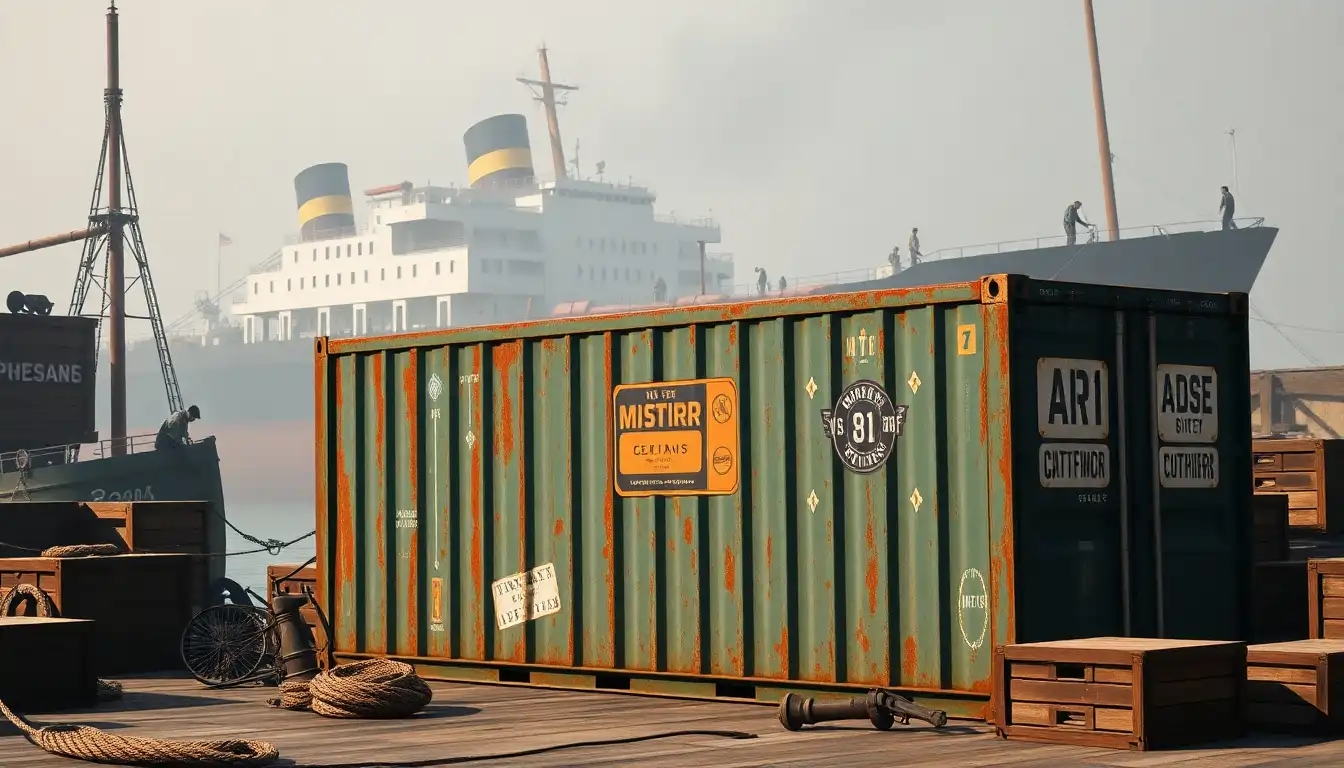Interested in buying a container?
If you are interested in purchasing a sea container, we will be glad to help you. Our experts are available to answer all of your questions and provide the information you need. Contact us today and find out more!
The use of different colors on shipping containers has several purposes. These include container identification, brand association, customs compliance and weather/temperature control.
Container Identification. New containers, also known as “single-use” or “one-way” containers, are often painted in different colors, such as gray or white, so that they can be easily identified as new. This helps warehouse and facility operators quickly identify and store containers according to their type and origin, eliminating the need to check each container individually.
Brand association: shipping lines often use specific colors on containers to create brand association. Containers belonging to a particular shipping line may be painted in the company’s corporate colors, which serves as a marketing tool and increases brand recognition.
Customs Compliance: Shipping containers must comply with various security regulations, and the color of the container can indicate compliance with these regulations. For example, containers used to transport hazardous materials may be painted in specific colors that indicate the type of material being transported, which helps ensure proper handling and storage.
Weather resistance and temperature regulation: container paint is designed for use in marine environments and acts as a protective barrier between the container body and the outside environment, preventing rust and corrosion. Different colors such as gray and white can be used to reflect sunlight and regulate the temperature inside the container, making it suitable for refrigerated containers designed to transport temperature-sensitive cargo.

In general, the use of different colors on shipping containers is not only aesthetically pleasing, but also practical in that it identifies containers, increases brand association, ensures regulatory compliance and protects cargo from inclement weather. Understanding the meaning of container colors provides insight into the shipping industry and promotes the safe and efficient transportation of cargo.
Meaning of the different colors of shipping containers
Shipping containers come in a variety of colors, and these colors often have a specific meaning. Let’s look at some of the most common container colors and their meanings:

Brown and maroon containers
Brown and maroon containers are often used by leasing companies. Dark colors tend to be more durable and can hide scratches, dents and rust, making them ideal for containers that are frequently moved and leased multiple times.
Blue containers
Blue containers are commonly associated with standard shipping containers used to transport dry goods such as grain, clothing, and electronics.
Red containers
Some companies use red containers for large containers. This makes them easy to distinguish from standard containers. However, red or other bright colors may also be used to indicate hazardous or toxic substances being transported in the container.
White containers
White containers are often associated with refrigerated containers. Light colors are known to reflect sunlight better, helping to keep the inside of containers cooler in warmer conditions, which is important when transporting temperature-sensitive cargo.

Gray or green containers
Gray containers are sometimes associated with military or government shipments. Gray is also popular because it reflects sunlight and keeps cargo inside the container cool.
It is important to note that container color schemes are not universal, and different shipping companies may use different colors for different container types, sizes, and environments.
What is the RAL color chart?
The RAL color chartЦветовая карта RAL is a European color matching system for paints, coatings and plastics. It consists of more than 200 standardized color samples, each with a unique four-digit code, which facilitates the transfer and accurate reproduction of color in various industries such as shipbuilding, automotive and electronics. RAL stands for “Reichs-Ausschuß für Lieferbedingungen und Gütesicherung”, which translates as “Imperial Commission for Supply Conditions and Quality Assurance”.

The RAL color chart is particularly popular in the paint industry, where exact color matching is important to achieve the desired finish or effect. In the shipping industry, RAL colors are widely used for paint and powder coatings, as well as for industrial finishes on shipping containers.
Therefore, if you need containers of a specific color, a RAL color chart can be a useful tool for determining and communicating your desired color. Whether you need containers in standard colors or non-standard shades, understanding the RAL color chart can help you find containers that perfectly match your requirements.



